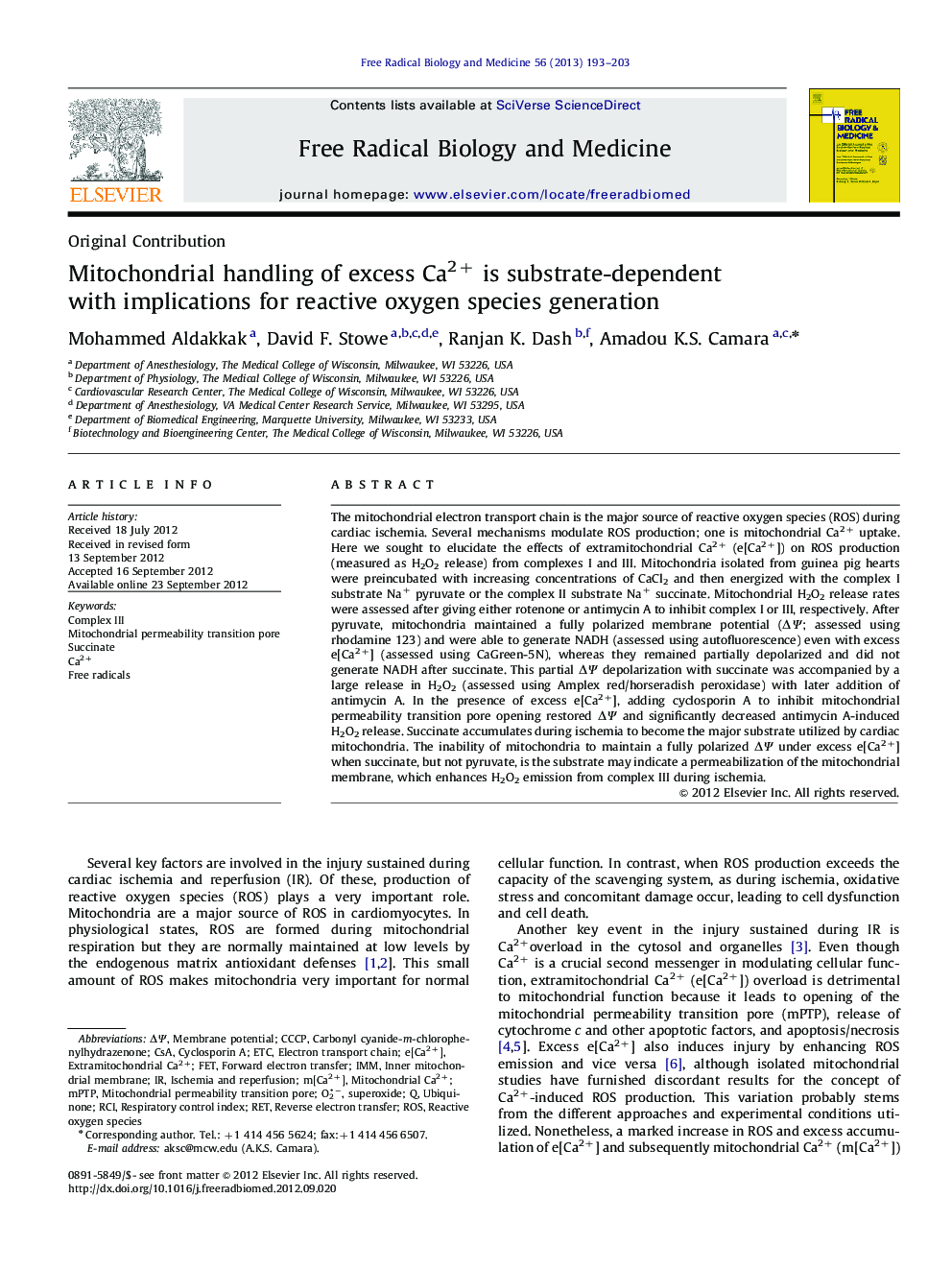| Article ID | Journal | Published Year | Pages | File Type |
|---|---|---|---|---|
| 1908571 | Free Radical Biology and Medicine | 2013 | 11 Pages |
The mitochondrial electron transport chain is the major source of reactive oxygen species (ROS) during cardiac ischemia. Several mechanisms modulate ROS production; one is mitochondrial Ca2+ uptake. Here we sought to elucidate the effects of extramitochondrial Ca2+ (e[Ca2+]) on ROS production (measured as H2O2 release) from complexes I and III. Mitochondria isolated from guinea pig hearts were preincubated with increasing concentrations of CaCl2 and then energized with the complex I substrate Na+ pyruvate or the complex II substrate Na+ succinate. Mitochondrial H2O2 release rates were assessed after giving either rotenone or antimycin A to inhibit complex I or III, respectively. After pyruvate, mitochondria maintained a fully polarized membrane potential (ΔΨ; assessed using rhodamine 123) and were able to generate NADH (assessed using autofluorescence) even with excess e[Ca2+] (assessed using CaGreen-5N), whereas they remained partially depolarized and did not generate NADH after succinate. This partial ΔΨ depolarization with succinate was accompanied by a large release in H2O2 (assessed using Amplex red/horseradish peroxidase) with later addition of antimycin A. In the presence of excess e[Ca2+], adding cyclosporin A to inhibit mitochondrial permeability transition pore opening restored ΔΨ and significantly decreased antimycin A-induced H2O2 release. Succinate accumulates during ischemia to become the major substrate utilized by cardiac mitochondria. The inability of mitochondria to maintain a fully polarized ΔΨ under excess e[Ca2+] when succinate, but not pyruvate, is the substrate may indicate a permeabilization of the mitochondrial membrane, which enhances H2O2 emission from complex III during ischemia.
Graphical abstractFigure optionsDownload full-size imageDownload high-quality image (129 K)Download as PowerPoint slideHighlights► We measured mitochondrial H2O2 emission under various experimental conditions. ► Succinate and elevated Ca2+ caused mitochondrial membrane permeability. ► Succinate and elevated Ca2+ caused a large increase in H2O2 from complex III. ► Early addition of rotenone prevented mitochondrial membrane permeability. ► Early addition of rotenone prevented the large increase in H2O2 from complexIII.
